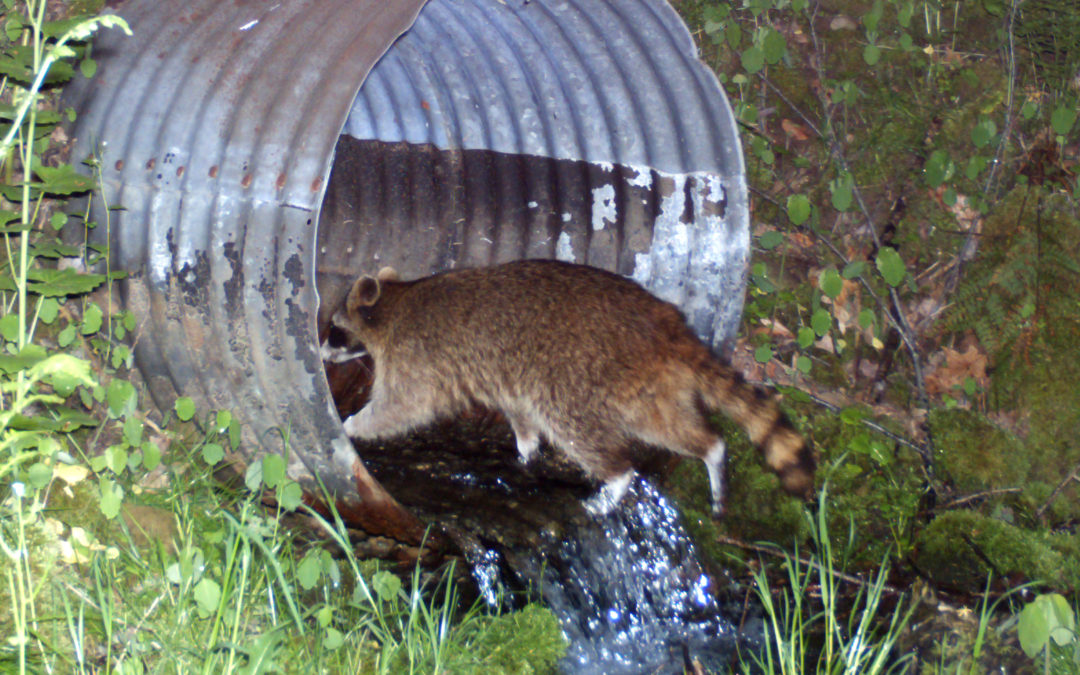Raccoon have always been one of my favorite furbearers – and I say that about all furbearers!
But why raccoon?
When I first started trapping we really had no coyotes, bobcat were a pipe dream, and beaver had a statewide limit of three. Raccoon were the big game for me when in elementary school. As I became mobile with a vehicle, raccoon prices resulted in coon being what I considered the money coon in my state, and I pursued them diligently. My first article, “The Culvert Set,” was sold my junior year of high school to Rich Harding, editor of Fur-Fish-Game. The complete focus of this article was coon as the quarry. As you can see a lot of things contributed to raccoon being my favorite target.
Just as raccoon are a favorite target of many trappers, the culvert set is arguably the go-to set for coon trappers.
A culvert set is simplicity. You find a tube running under a road – a culvert – and you set a trap at the culvert’s mouth. Any critter running through the culvert is caught. Easy!
That is how a culvert set works. It has been the instrument in the taking of tens of thousands of coon, as well as countless mink, muskrat, possum, and other furbearers. I’ve taken beaver, otter, gray fox, and others in culvert sets made for raccoon. Of course, water depth and culvert diameter are a great influence on what may or may not travel through a particular culvert.
So, is this the end of the article? What more can be said about making a culvert set?
In addition to many years of experience and observation, I have thousands of hours of trail camera images which I study. A fair amount of these have been trail cameras aimed at culverts. Just as with traps, I have taken images of many furbearers at these culverts. Some have been as expected, but I have learned a lot as well.
The primary observation with the use of trail cameras has to do with animals NOT using culverts as passageways.
Many clips showed raccoon would work up a small creek or run to the culvert. Sometimes they’d be moving fairly fast. You know, things to do and places to go sort of movement. Other times they’d work more slowly feeling the edges and bottom for food.
In most all cases, when the mouth of the culvert was reached, the raccoon would investigate the opening. They might step just inside the mouth and feel around, but more times than not, would then turn aside and climb up the bank to cross over. Even water-based mink and otter often prefered the overland route.
To catch more coon, don’t reach well inside the culvert to place the trap. You will miss many that never go in that far before rerouting over the bank. Instead, place the trap right at the opening. Most coon will investigate the culvert mouth even if they don’t go through. A trap set at the mouth instead of a foot or two inside will take more coon.
Keep this in mind when using culvert sets. It’s a subtle difference resulting in bigger results. •

